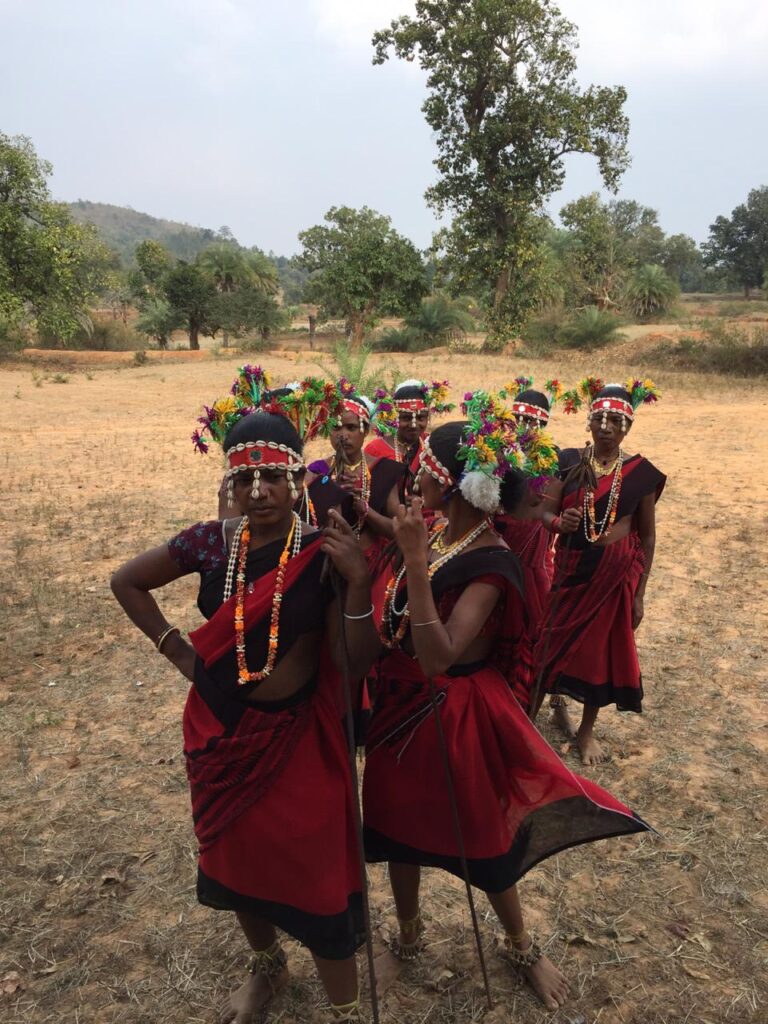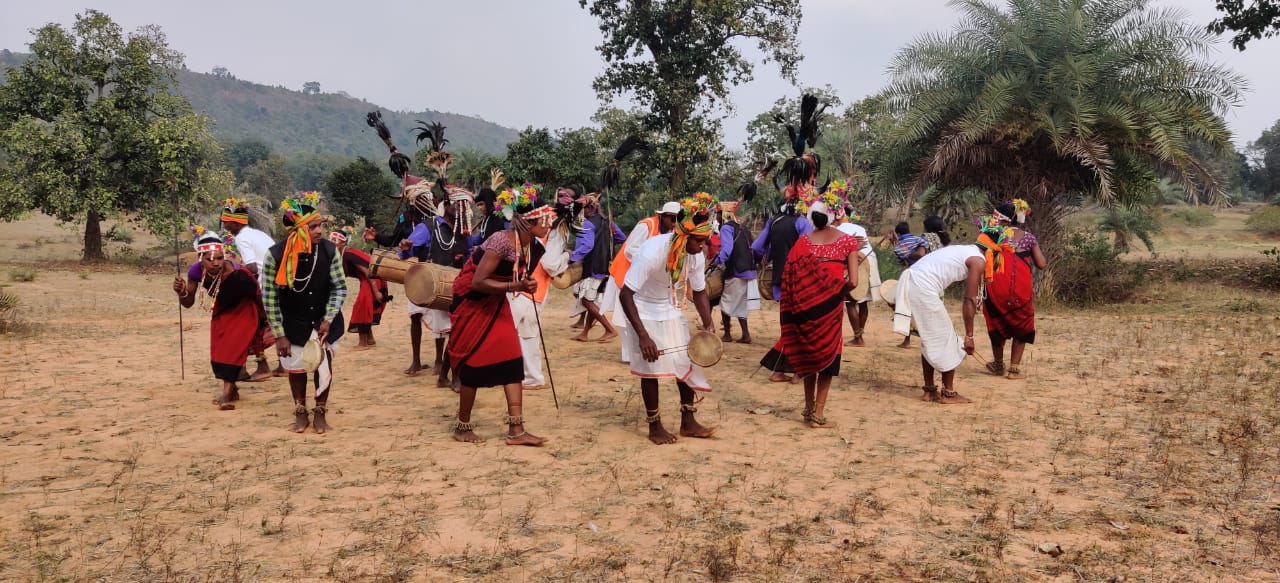The Anga Devs, are probably the most important gods of the tribes in Chhattisgarh. Made of wood hewn from a special tree, Anga Dev has two legs as limbs and a plank joining in the centre as its body. The primary role of the deity is that of inquest.
February is a festive season in villages as there’s crop at home. Every village fixes a date to invite friends and relatives from other villages, and they celebrate with several offerings to God. At this time, they make a special dish called “Landa”. It’s a drink made out of fresh rice grains, which are stored for 3-4 days before grinding. The drink is then offered to guests. Everyone in the village celebrates mela (a local fair) for 2-3 days and then they visit neighboring villages to celebrate with people living there.
Once they are done with crop celebration in March, a major event is the fall of “Mahua” flower. Tribes in Bastar region are widely dependent on Mahua. It’s a plant which is used in different ways. The flower is used in making alcohol, the seeds for making oil while the roots become ingredients for different medicines. When, Mahua starts falling from trees, every member of the family goes to their respective Mahua trees and collect the fallen flowers. They dry it under the sun, and it goes on until mid of April.
Before the end of Mahua season, people burn their fields to destroy weeds so that it helps Tendu plant to grow. Tendu pattha (leaf) is also a major livelihood activity where the whole family gets involved in the month of April and May. During this season, small Tendu plants tend to have fresh leaves. Everyone collectively plucks those leaves, dries them up and sells to government officials. Mainly these leaves are used in making Beedi (a local form of cigarette).
Apart from these livelihood activities, people also involve themselves in hunting during summer. Since there are no natural conditions to grow vegetables in this season, they mainly depend on animal meat. Besides, all weddings are planned during summer. Right after, Mango season starts when all villagers gather at a place to celebrate “Aama Pandu” (mango festival). They cut the mango, cook it, offer it to God and then eat it. There’s another festival called “Beeja Pandu” (mango seed). They pluck the mangoes, chop the raw ones and sell them.
Next, they clear their fields and start plowing it to prepare before the rain starts. This happens in the month of June and they sow seeds after the first rain. From July to September, people are usually involved in agriculture. Once they have the first round of grains, they celebrate “Daan” festival, a symbol of happiness derived from seeing their crop. Again, the first few grains are offered to god and they go back to fields in order to protect the crop.
In October, we all celebrate Dussehra and Diwali, but in Bastar, they do it differently. They have the longest Dussehra which goes on for 70 days. It involves various activities and then all the people walk to Dantewada where goddess Danteshwari maata was once found. From there, they carry her sculpture 80 km away to Jagdalpur. On the main day of Dussehra, the king of Bastar offers prayers to goddess marking an end to the event.
Once the crop is fully grown by November, it is cut and stored in the field after which the vegetables are sowed. During this season, tomato is the major food crop. They produce it on a large scale and the entire December month goes in cultivating food crops. Again, from January, threshing starts. Without the intervention of outside forces, the entire year of tribal people in Bastar is well planned as per nature and nothing has changed until now.


